Raoul Pictor 2023 Featured
To mark the 30th anniversary of “Raoul Pictor seeks his style…” (1993), the Crypto Painter web app is launched, unveiling Raoul Pictor’s new style: “Country Spirit I” on fxhash

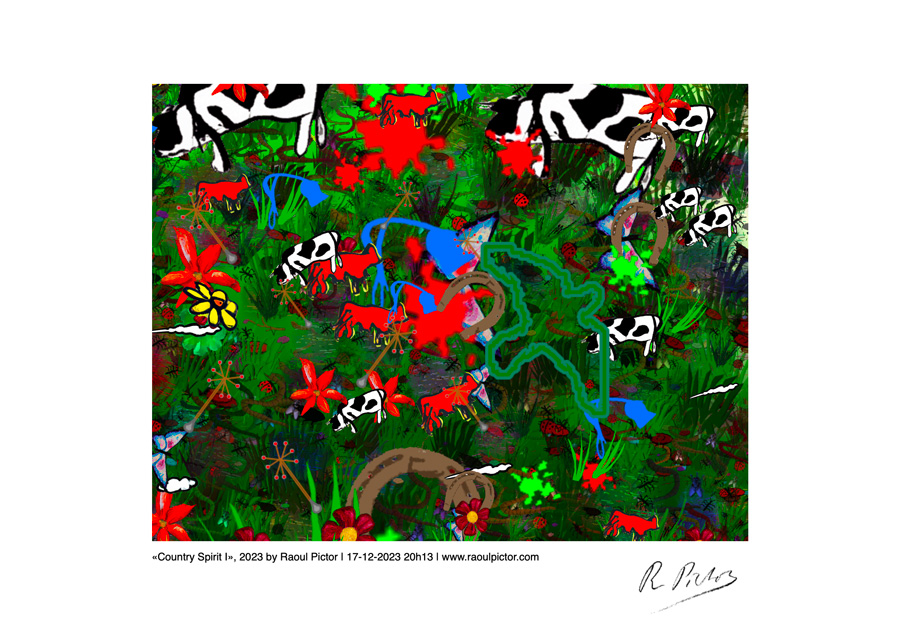
To mark the 30th anniversary of “Raoul Pictor seeks his style…” (1993), the Crypto Painter web app is launched, unveiling Raoul Pictor’s new style: “Country Spirit I” on fxhash


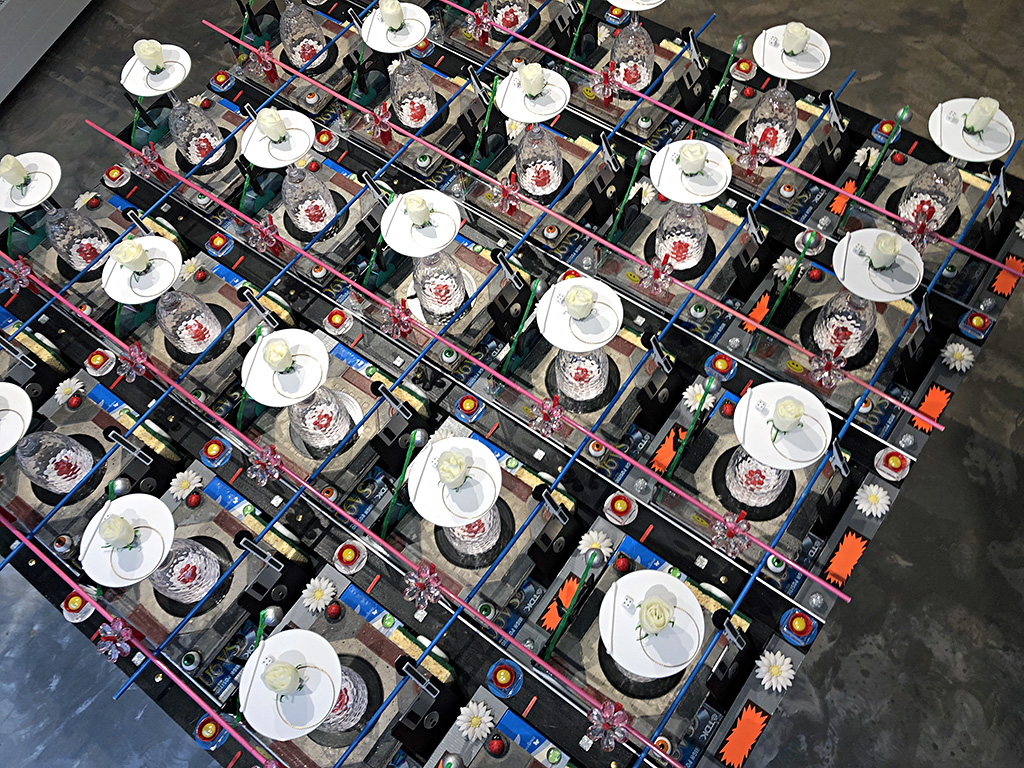
“Hervé Graumann présente AK66, une œuvre qui s’inscrit dans la continuité de ses patterns, des «installations ornementales où l’impression d’une production d’image numérique est inévitable et immédiate». Comme un travail de mémoire introspectif, AK66 évoque la genèse de cette série d’œuvres.
Utilisant les thèmes chers à l’artiste tels que l’atelier, le recyclage et l’éphémère, cette nouvelle pièce utilise comme base de création les carreaux de ciment qui ornaient le hall de l’immeuble récemment détruit situé rue des Acacias 66 à Genève, où l’artiste investissait son premier atelier en 1986.”
“Hervé Graumann presents AK66 as part of the continuity of its patterns «ornamental installations where the impression of a numerical image production is inevitable and immediate». AK66 evokes the genesis of this series of works like an introspective memory work.
Using themes cherished by the artist such as the studio, recycling, and ephemerality, this new piece uses as a basis the cement tiles that adorned the lobby of the recently destroyed building located at Rue des Acacias 66 in Geneva, where the artist invested his first studio in 1986.”
Exposition Base Window > 03.03.2023
12 Rue de Monthoux
1201 Geneva – Switzerland basewindow.ch
Suivez-nous sur Instagram @base_window
Couleur minute, 1990
computer, monitor, software / ordinateur, écran, logiciel
A monochrome color is displayed on the computer screen and changes each minute.
Couleur Minute online version (revisited version)
Thanks to Matthieu Cherubini for the adaptation.
The link open a new page, use fullscreen mode for the best presentation.
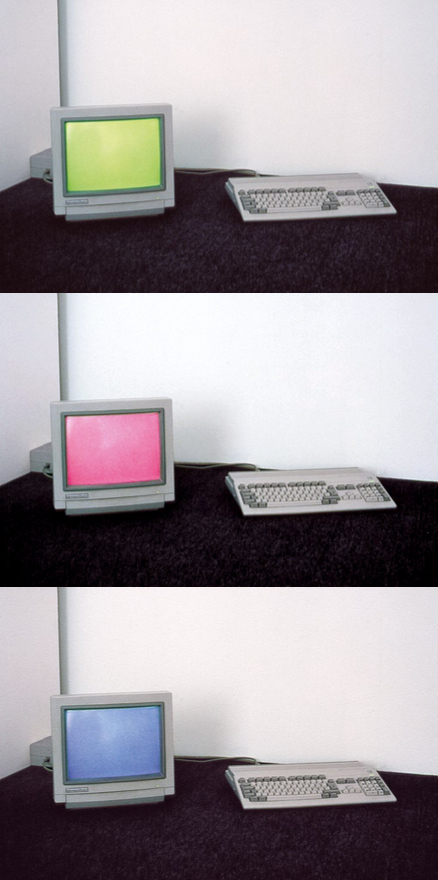
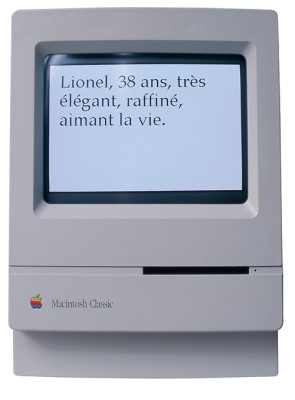
Profils perdus, 1994
ordinateur, générateur de petites annonces aléatoires
computer, random generator of classified ads
Profils Perdus (version originale Fr.)
(Hommes & Femmes, 18-40 ans)
Français / French
Profils Perdus (english version)
(Men & Women, 18-40 years old)
Anglais / English
Profils Perdus (Hommes seulement)
(Hommes, 18-40 ans / Men, 18-40 years old)
Français / French only
Profils Perdus (Femmes seulement)
(Femmes, 18-40 ans / Women, 18-40 years old)
Français / French only
Un grand merci à Matthieu Cherubini (mchrbn.net) pour avoir actualisé ce travail en Html 5. Ce générateur a été réalisé à l’origine avec MacroMedia Director.
Pour répondre à certaines demandes, des variantes ont été ajoutées: Hommes ou femmes uniquement, jeunes et moins jeunes…
Vous pouvez utiliser ce travail comme écran de veille avec la fonction plein écran de votre navigateur, ainsi vous vous sentirez moins seul.
Les annonces changent automatiquement toutes les 10 secondes, vous pouvez également cliquer sur l’annonce pour la changer manuellement.
Many thanks to Matthieu Cherubini (mchrbn.net) for making this work available in Html 5. This generator was originally realized with Macromedia Director.
Some people made requests for having customized versions: Men or Women only, young or mature people…
You can use this work like a screen saver with the fullscreen function of your browser, you will then feel less alone.
The classified ads refreshes automatically every 10 seconds , you can also click on the ad to change it manually.
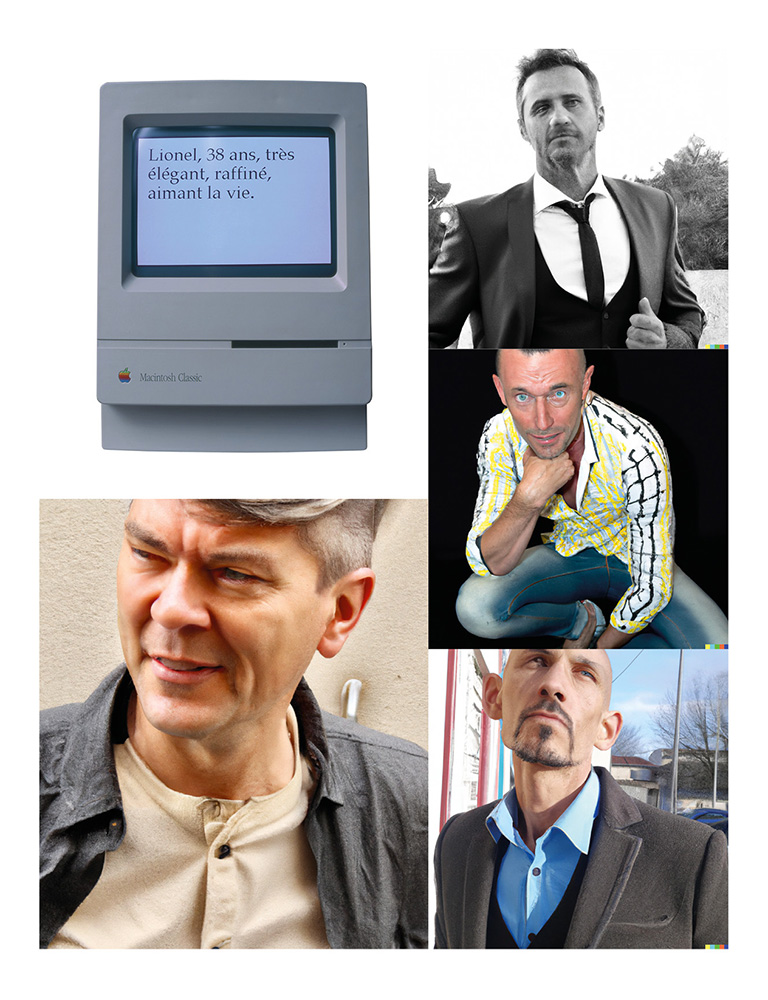
“(…) The impression of digital pictorial production is inevitably evoked in the large patterns installed on the floor. In this case, the transformative principle of addition, the efficient repetitive gesture of copy and paste, would be within grasp were it not for the hands-off effect of the fragile engineering of the artist’s complex installations. The three-dimensional ornament, although spread out at our feet, cannot be seen all at once. In contrast to a pattern on a surface, the spatial structure changes with every change in vantage point. Every view of the installation, every static perception reveals new contiguities and therefore new semantic relations and insights. The pattern can be animated with a single gaze although it does not move. The act of seeing is in itself indeed an act. Skull, needle, egg and nail, cookie and CD-ROM accumulate on cardboard plates, in plastic cups and on placemats in extensive repetition of the same things, becoming not a surreal but rather a trans-real scenario. Looking, we traverse mental landscapes revealed in constantly changing panoramas. (…)”
Hans Rudolf Reust in “Swapping surfaces“
“(…) Face aux grandes installations ornementales qui couvrent le sol, l’impression d’une production d’image numérique est inévitable et immédiate. On pourrait presque toucher du doigt le principe transformateur de l’addition, le geste rapide et répétitif du “copier/coller”, si la statique fragile des constructions complexes ne nous tenaient à distance. L’ornement tridimensionnel interdit alors, même s’il se déploie à nos pieds, la vue d’ensemble. Contrairement à un dessin sur une surface, la structure spatiale change ici selon chaque point de vue. Chaque examen visuel de l’installation, chaque vue statique, communique de nouvelles situations de proximité entre les choses et, par voie de conséquence, de nouveaux contextes significatifs et de nouvelles connaissances. Avec un seul regard englobant, le motif s’anime sans qu’il ne bouge. Le simple fait de voir devient un acte. Crâne, seringue, œuf et clou, cookie et CD-ROM s’associent sur des assiettes en carton, des gobelets en plastique et des sets de table, autant de répétitions du même qui donnent lieu à une scène moins surréelle que transréelle. En regardant, nous traversons des paysages mentaux qui s’ouvrent selon les divers points de vue. (…)”
Hans Rudolf Reust in “Échanges de surfaces“
Great update of a digital art classic!
“With this app, you will get a pioneer work of Swiss digital art! Furthermore, it will generate an endless amount of new artworks!
Raoul Pictor, the charming fictitious painter starring this app, was first created by artist Hervé Graumann in 1993 on an Apple LC 475 computer. The pictures created by Raoul were printed on an ink jet printer. The exhibition visitors could take the prints for free or a few bucks.
This App is an update of the project, created on the occasion of the 20th anniversary of the piece in association with artist Matthieu Cherubini. Raoul is still painting (and drinking and taking naps to get inspiration) and you can print his paintings, but there are also new features. The augmented reality function is tons of fun. Raoul’s paintings appear on the screen of the built in camera, so you can add them to any room you’re in, e.g. replace other pictures in a picture you take of an art show or add them to your favorite white wall at home. The photos you created with the inserted paintings can be shared with one click on the projects Flickr page.”
RD, art historian, January 2014
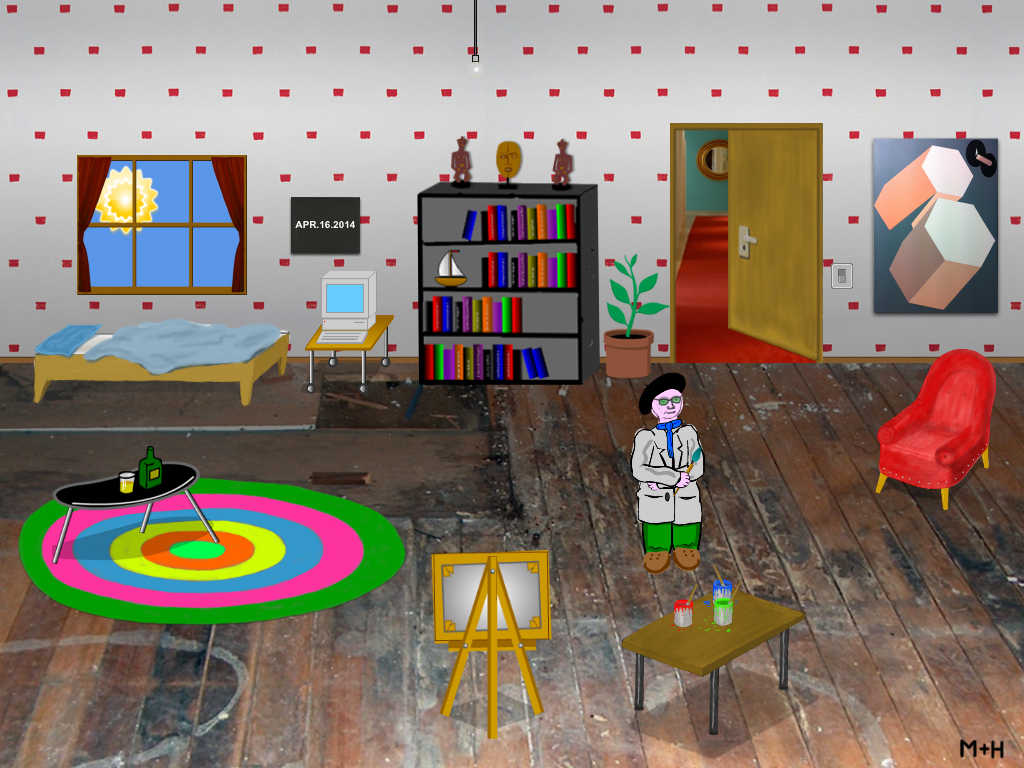
Raoul Pictor in the studio, 2014
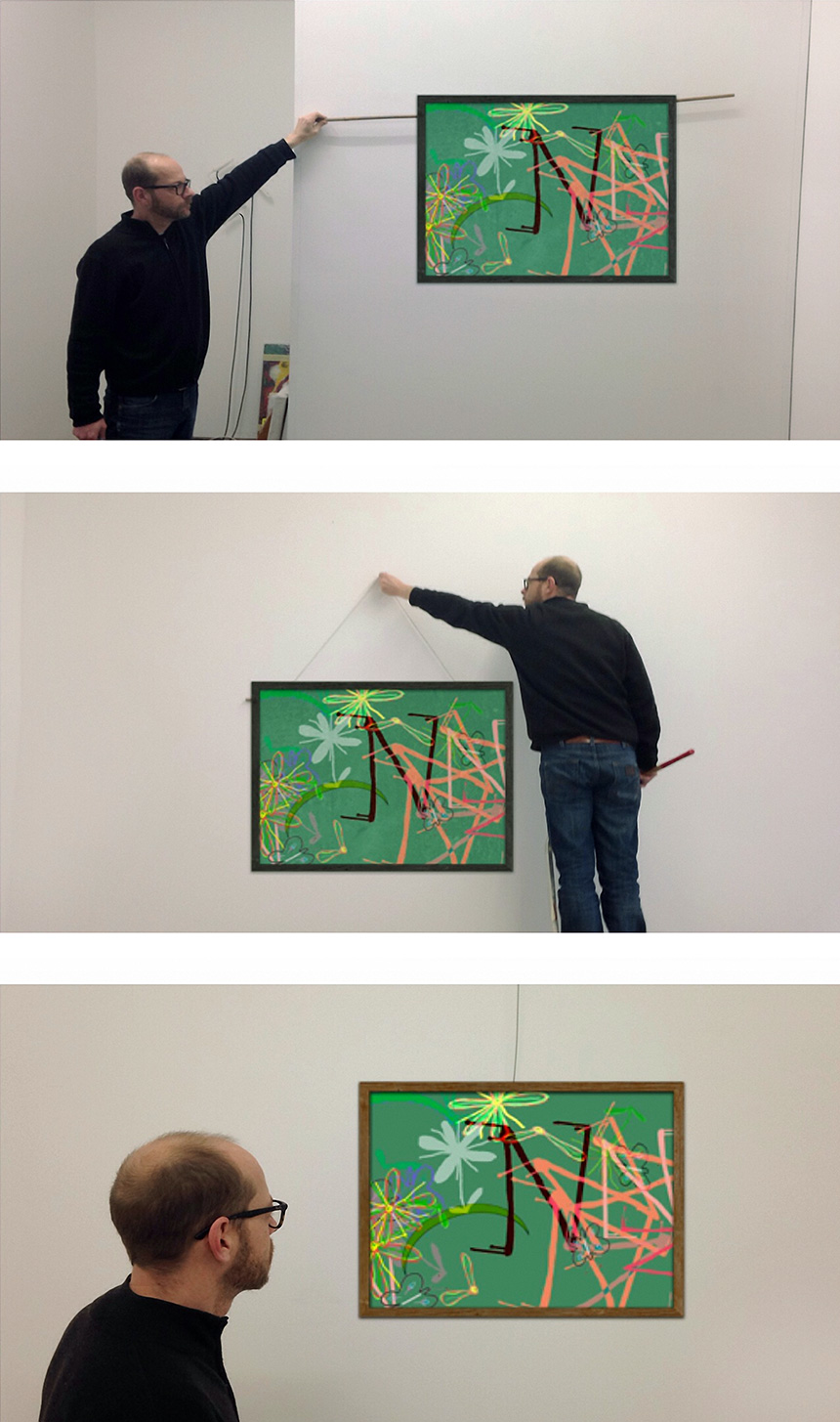
“The Raoul Pictor app show”, 2014 – TMproject gallery, geneva Cyril Kerr installing a painting.
Other images of the installation of the exhibition here.
Images of the exhibition here.

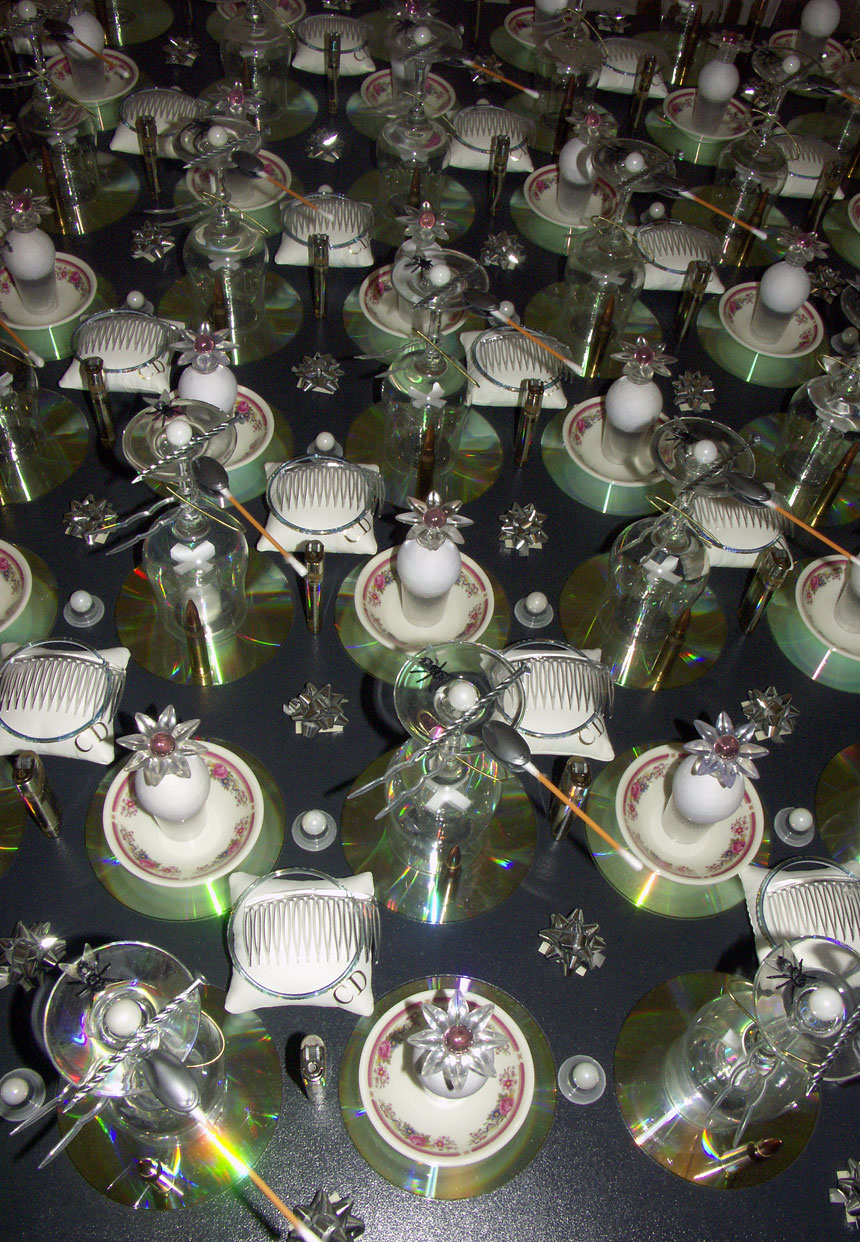

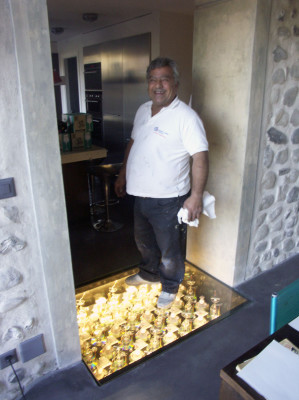
@ Post Tenebras Luxe, Musée Rath, Geneva, 2009
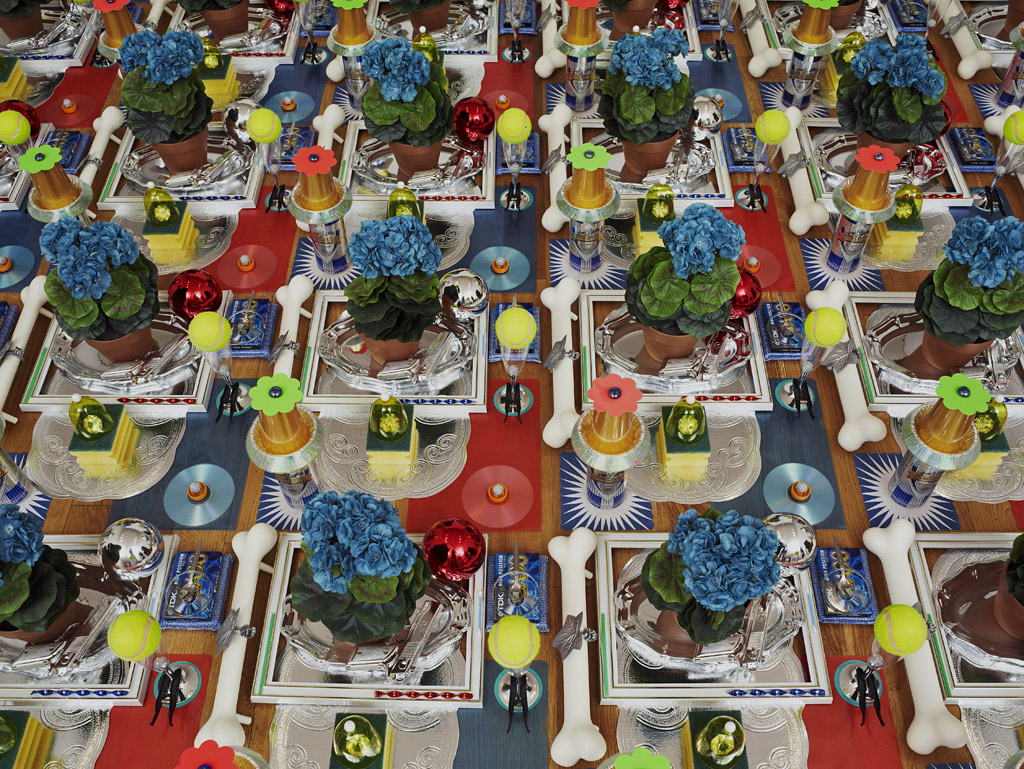
“PTL pattern”, 2009
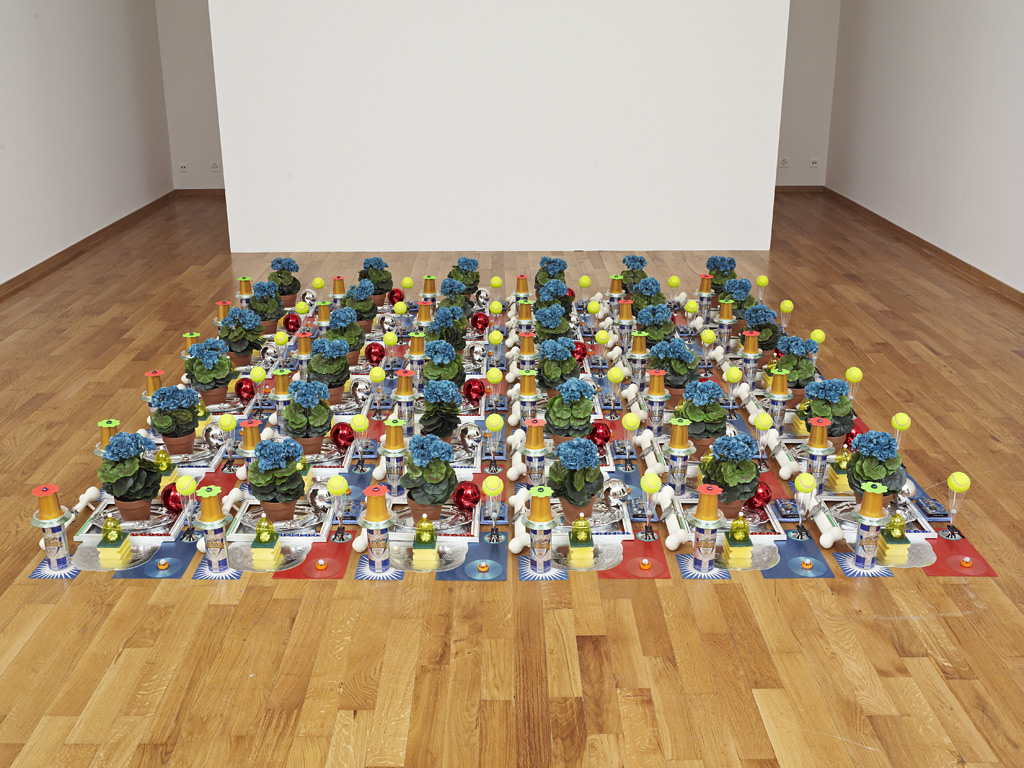
“PTL pattern”, 2009 – installation, sundry objects – appr. 300×300 cm. (Photo Sandra Pointet)
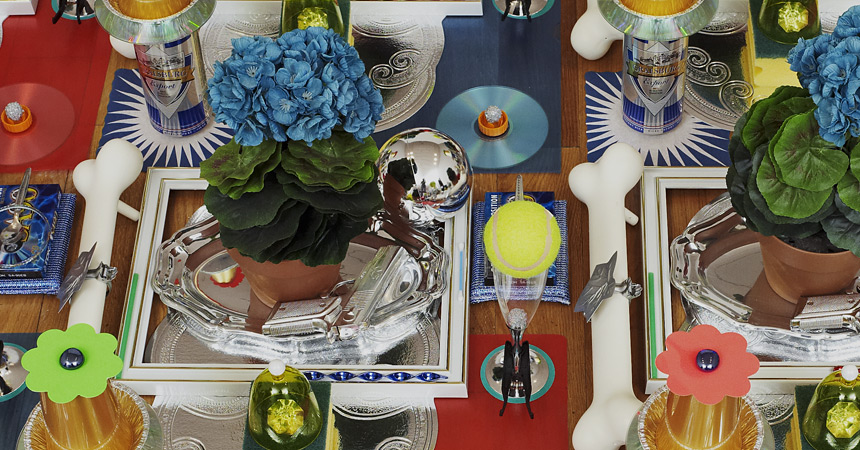
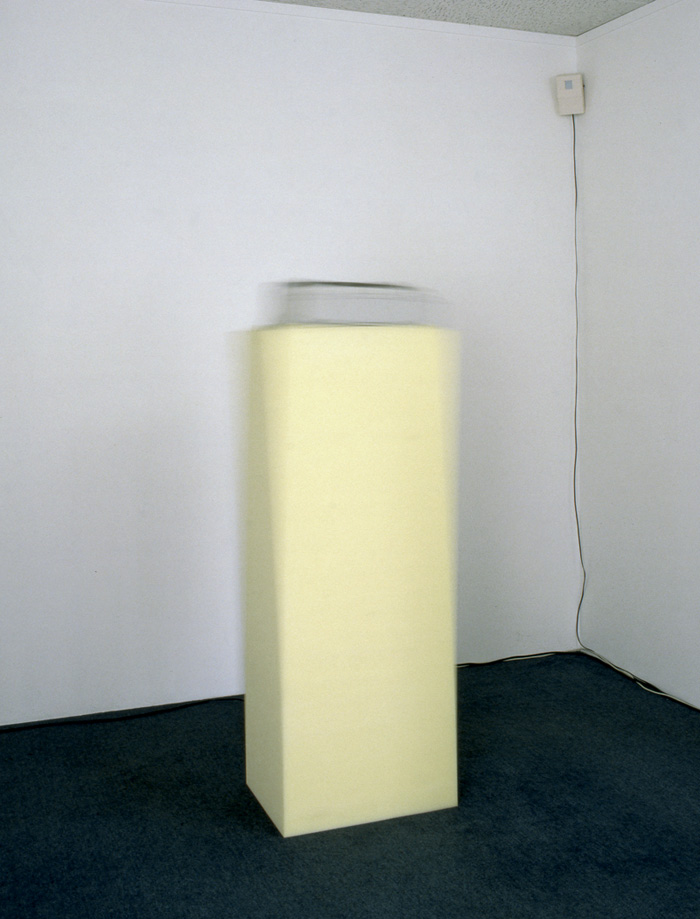
Hard on soft, 1993 – ordinateur, imprimante à aiguilles, socle en mousse / computer, dot matrix printer, foam base – 145 x 50 x 40 cm.
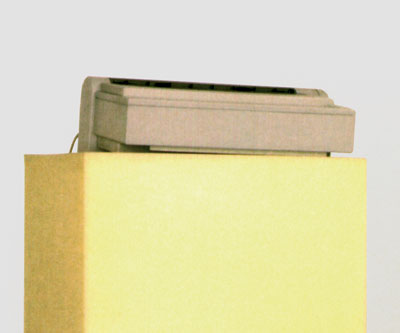
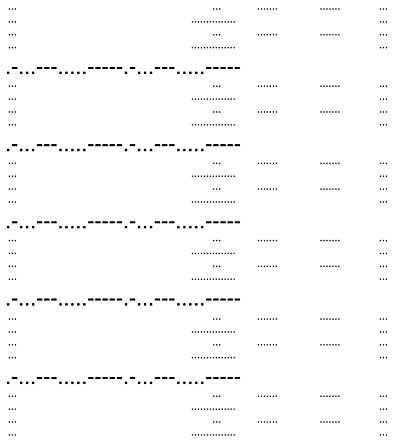
audio file of one of the 7 compositions
View: Andata Ritorno Gallery, Geneva, 1994

Green plant entertainment, 1994-95 – dispositif informatique, interface, logiciel, son, eau, lumière, plante verte computer device, interface, software, sound, water, light, pot plant – dimensions variables
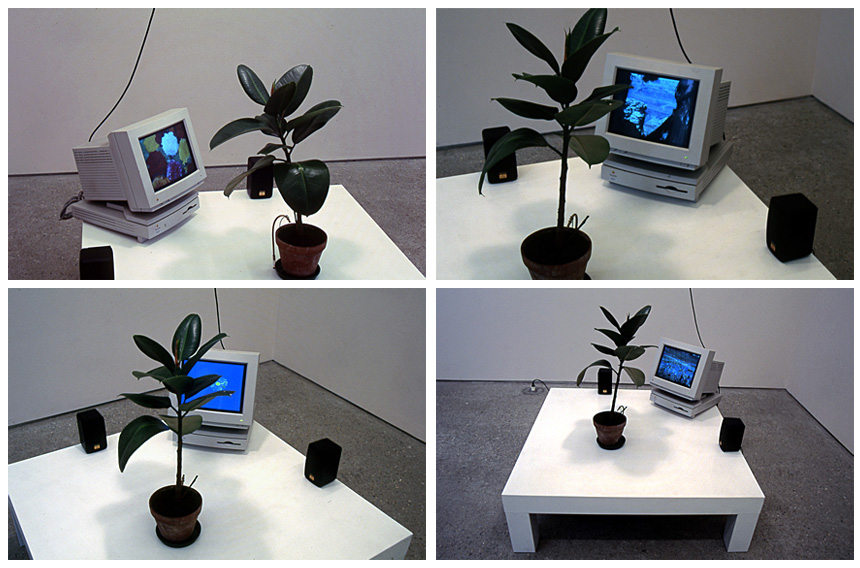
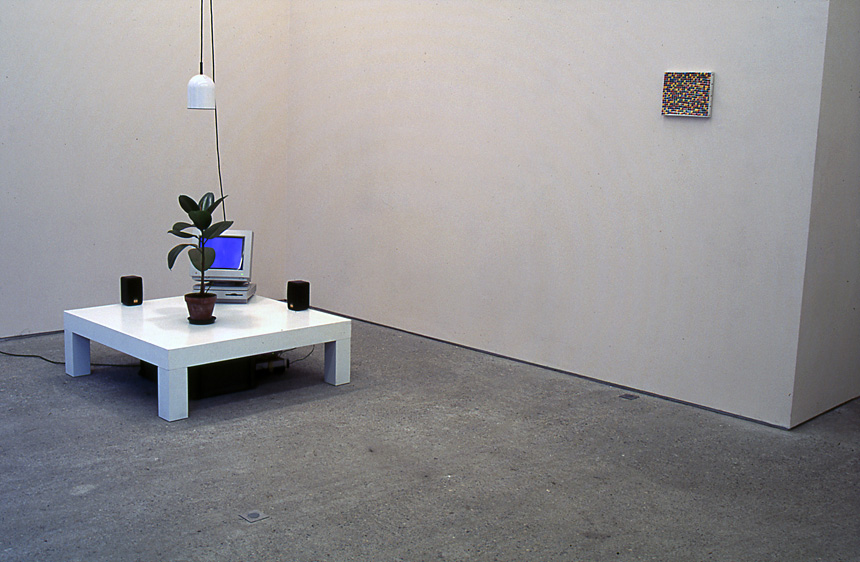

Exhibition view – “White noise”, Kunsthalle Bern, 1998
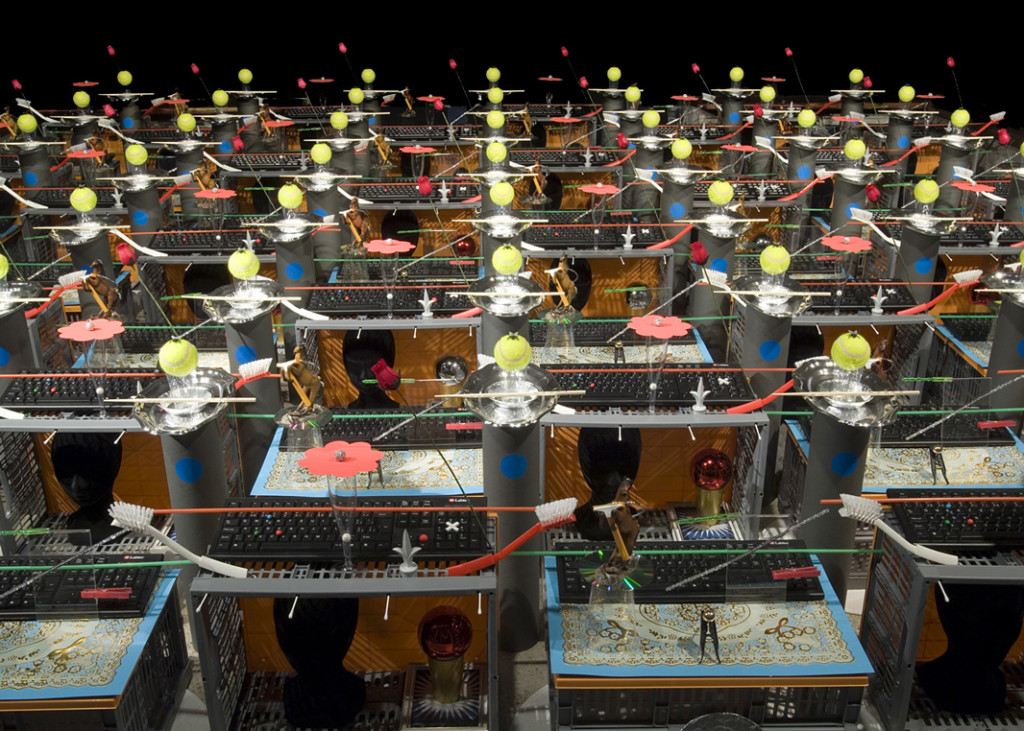
grey zone pattern, 2007 – installation, sundry objects – app. 480 x 480 cm. | Fondation Salomon art contemporain (photo: m. domage)
* * *
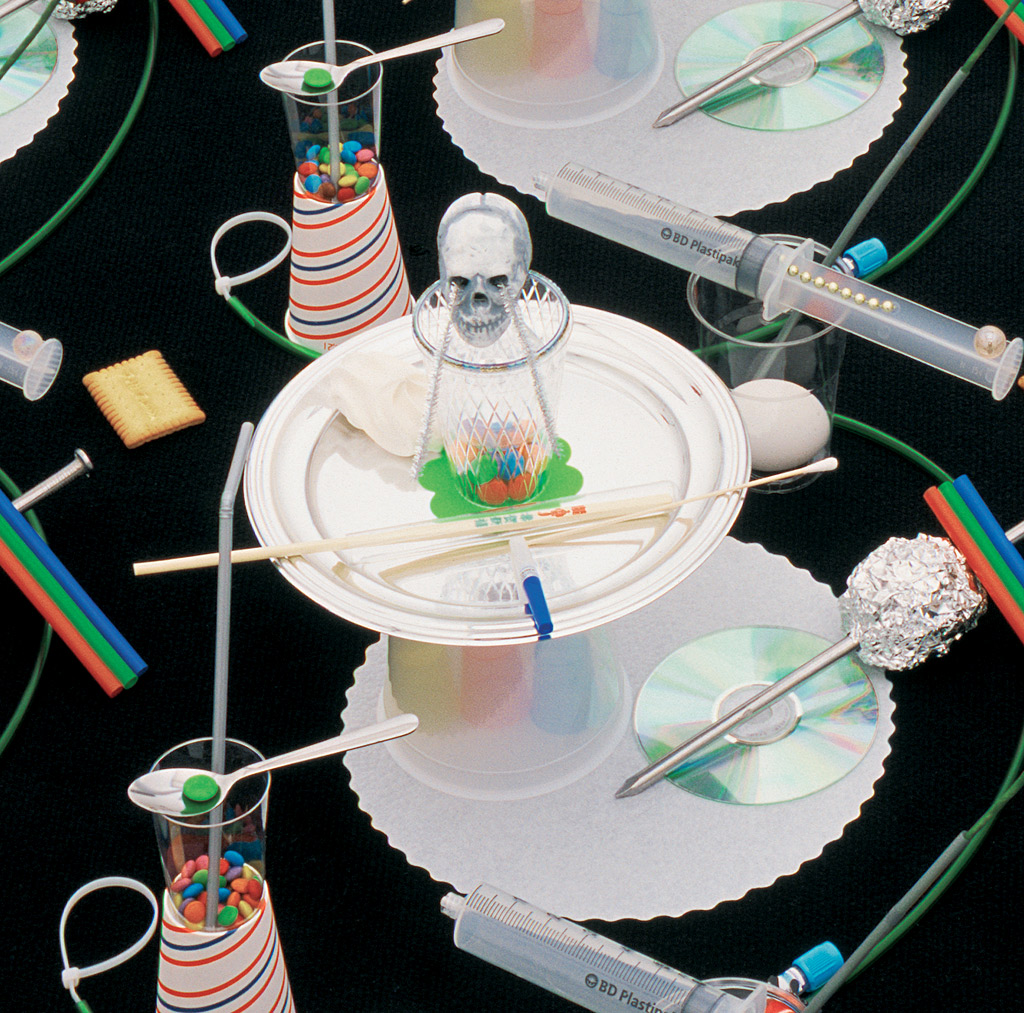
Pattern – Vanité 2b, 2003 – (detail)
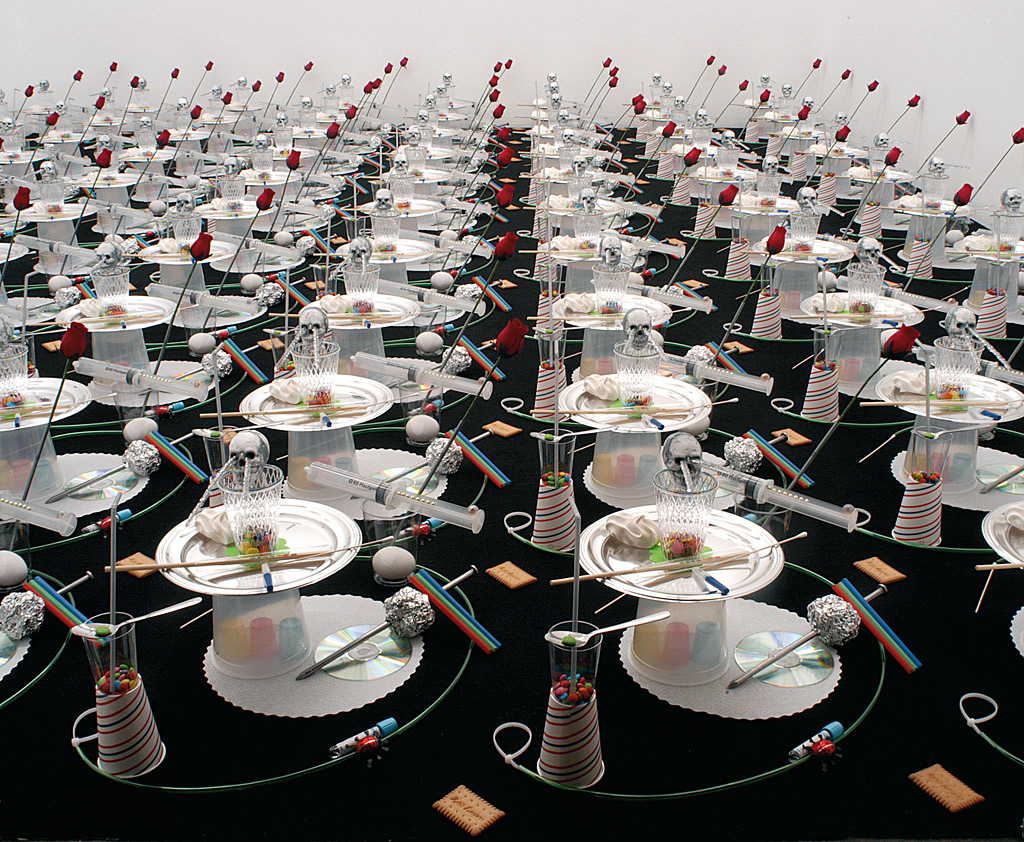
pattern vanité 2b, 2003 – installation, sundry objects – 400 x 500 cm.
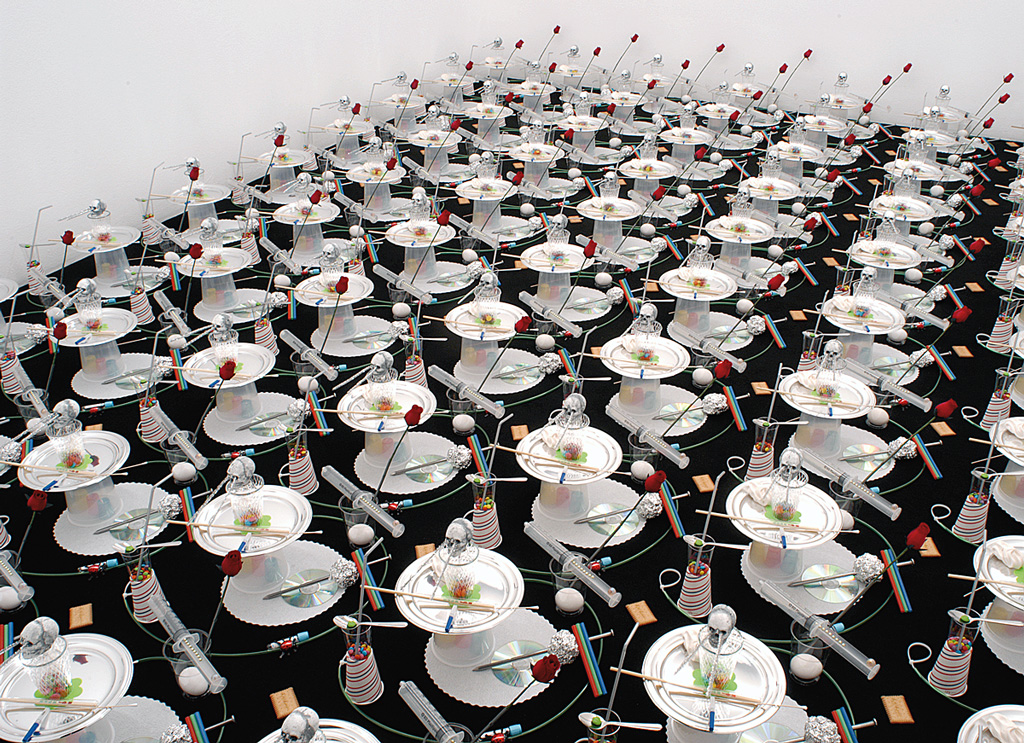
Pattern – Vanité 2b, 2003 – installation, objets divers / installation, sundry objects – 400 x 500 cm. – installation view, mamco geneva
* * *
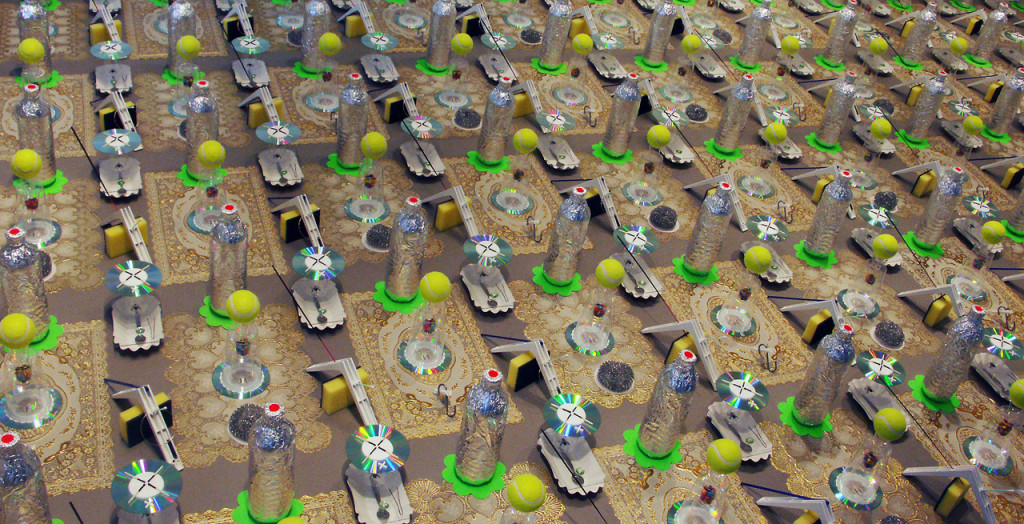
oriental gold pattern, 2006 – installation, sundry objects – appr. 350 x 800 cm. (exhibition view villa Oppenheim, Berlin)
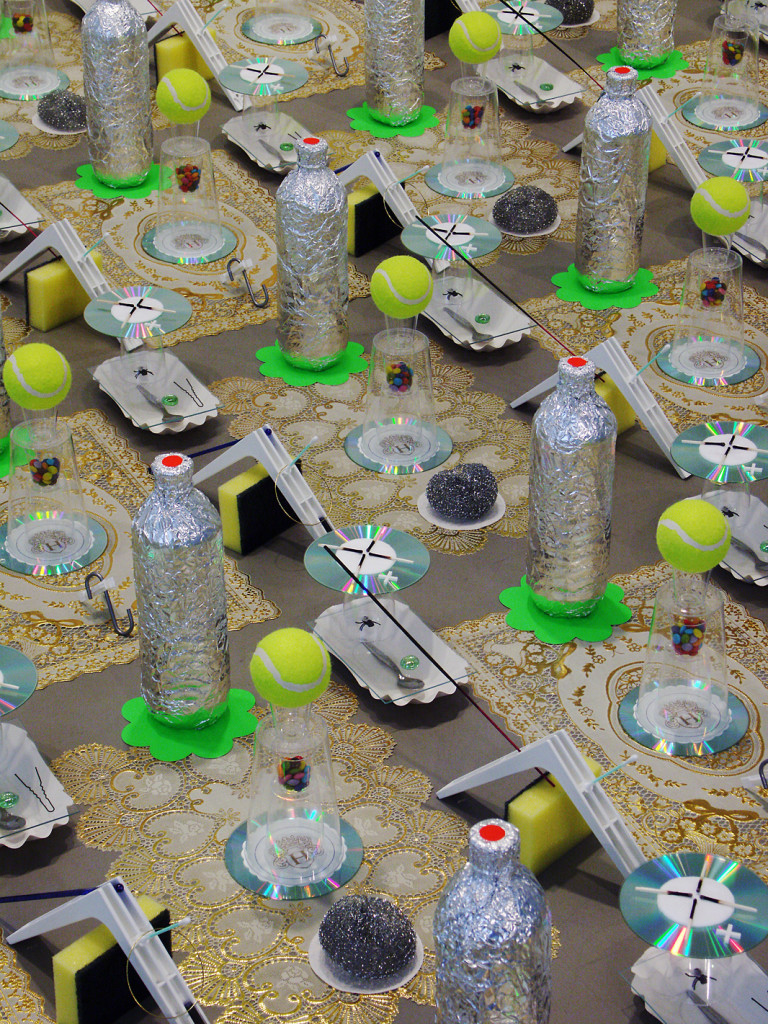
oriental gold pattern, 2006 – (detail)
* * *
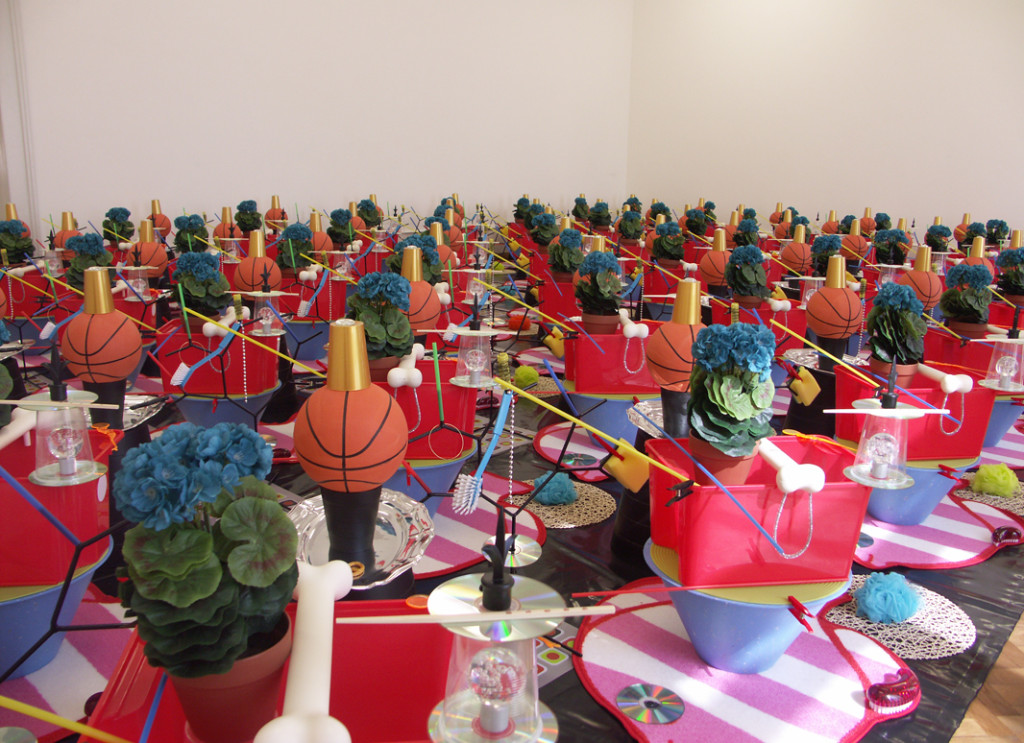
fish & bone w. emerald flower, 2007 – installation, sundry objects – appr. 600 x 900 cm. (exhibition view centre pasquart, Bienne)
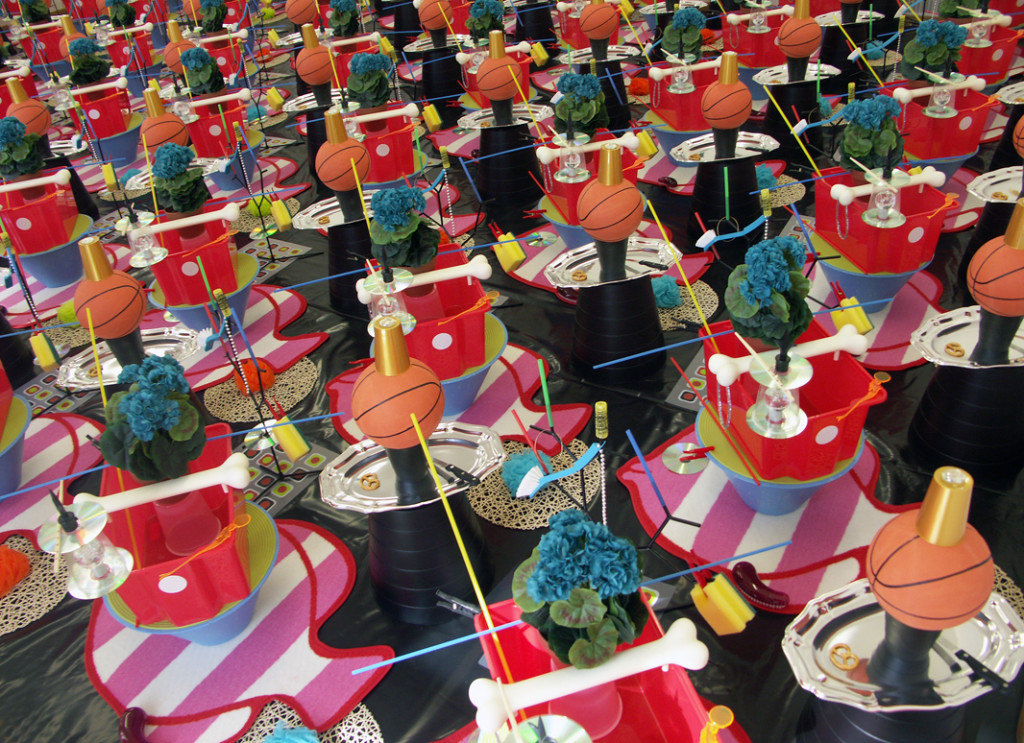
fish & bone w. emerald flower, 2007 – installation, sundry objects – appr. 600 x 900 cm.
* * *
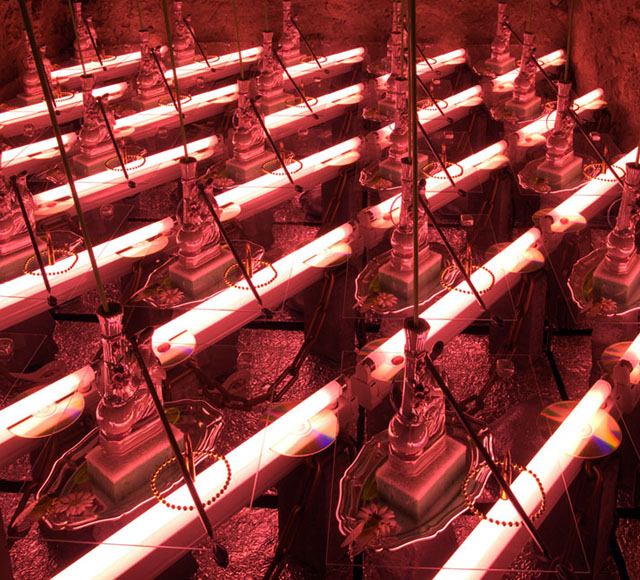
encrypted rosa pattern, 2005 – installation, sundry objects – 230 x 250 cm. (coll. Fondation Salomon art contemporain)
* * *
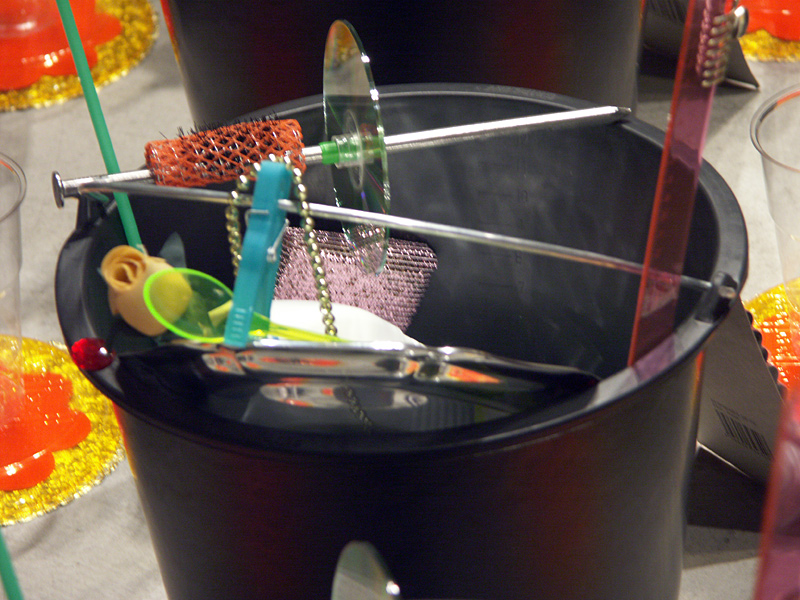
synth field pattern, 2005 – (detail)
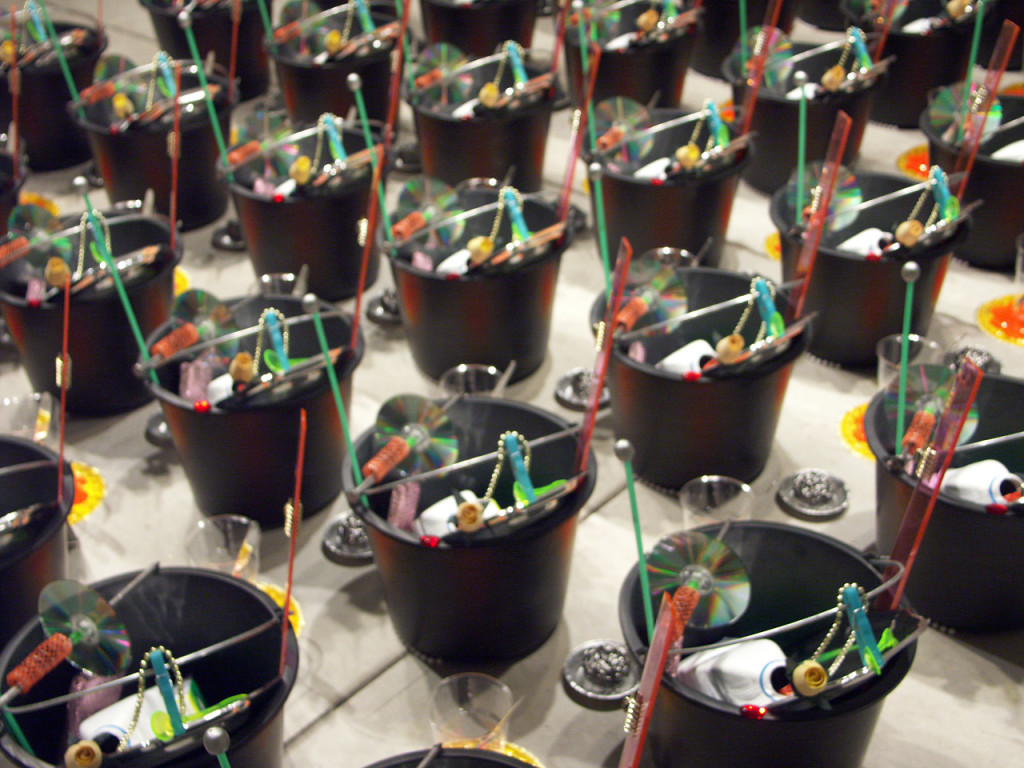
synth field pattern, 2005 – installation, sundry objects – appr. 400 x 400 cm.
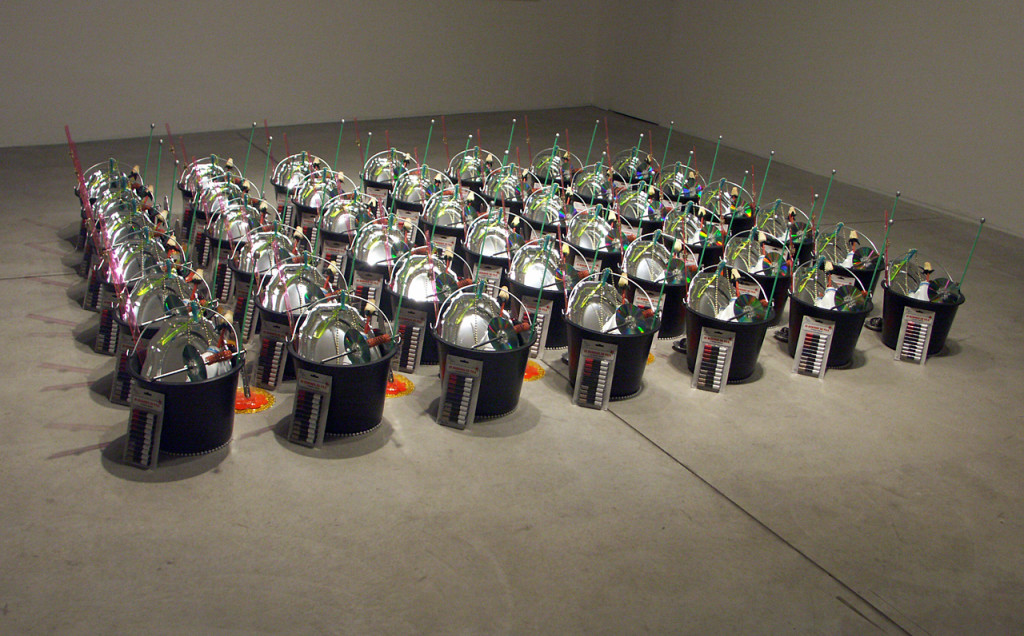
synth field pattern, 2005 – installation, sundry objects – appr. 400 x 400 cm. (exhibition view gallery 1000eventi, milano)
* * *

India Jamaica mix pattern, 2007 – installation, sundry objects – appr. 600 x 900 cm. (exhibition view centre pasquart, Bienne)
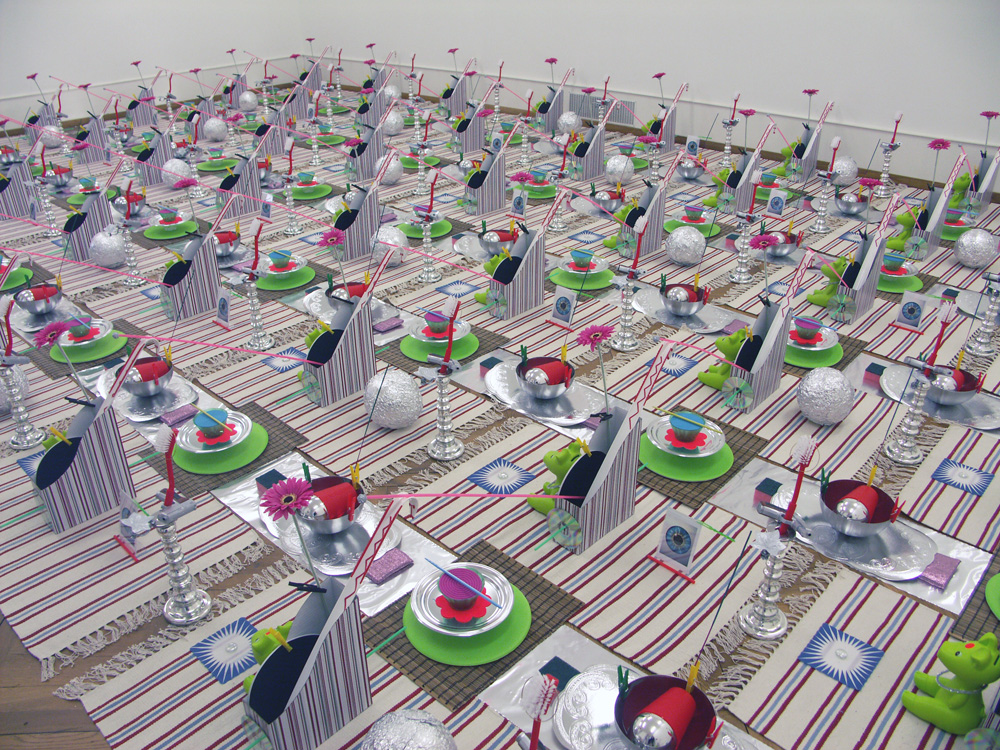
India Jamaica mix pattern, 2007 – installation, sundry objects – appr. 600 x 900 cm.
* * *
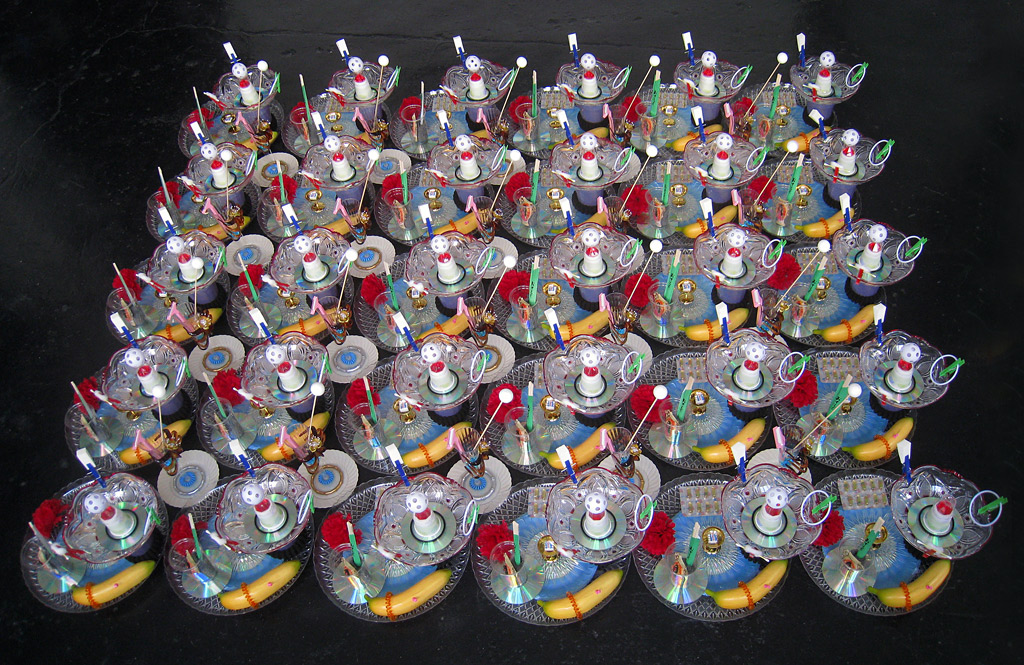
garbage chic L.A. pattern, 2010 – installation, sundry objects – appr. 220 x 200 cm.

garbage chic L.A. pattern, 2010 – installation, sundry objects – appr. 220 x 200 cm.
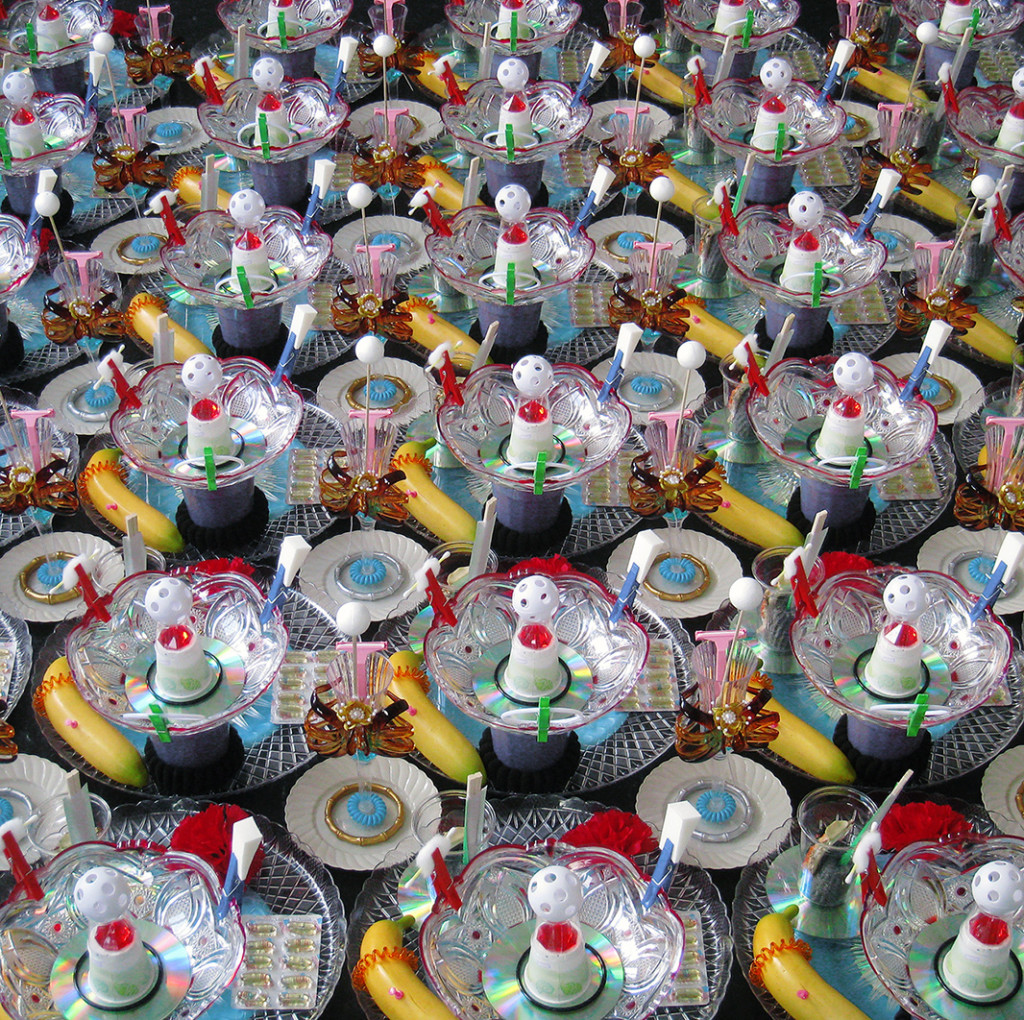
garbage chic L.A. pattern, 2010 – installation, sundry objects – appr. 220 x 200 cm. (CompactSpace Los Angeles)
* * *
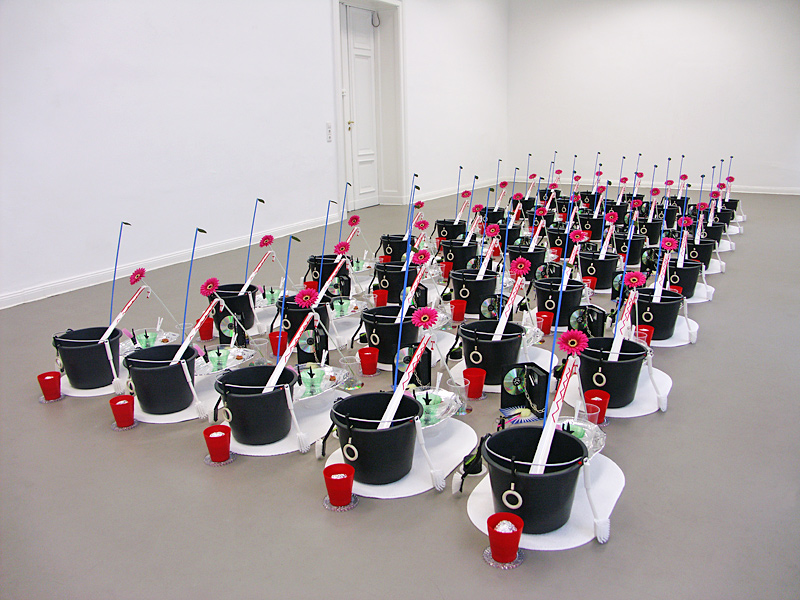
b. rhythmaschine pattern, 2006 – installation, sundry objects – 280 x 775 cm. (exhibition view villa Oppenheim, Berlin)
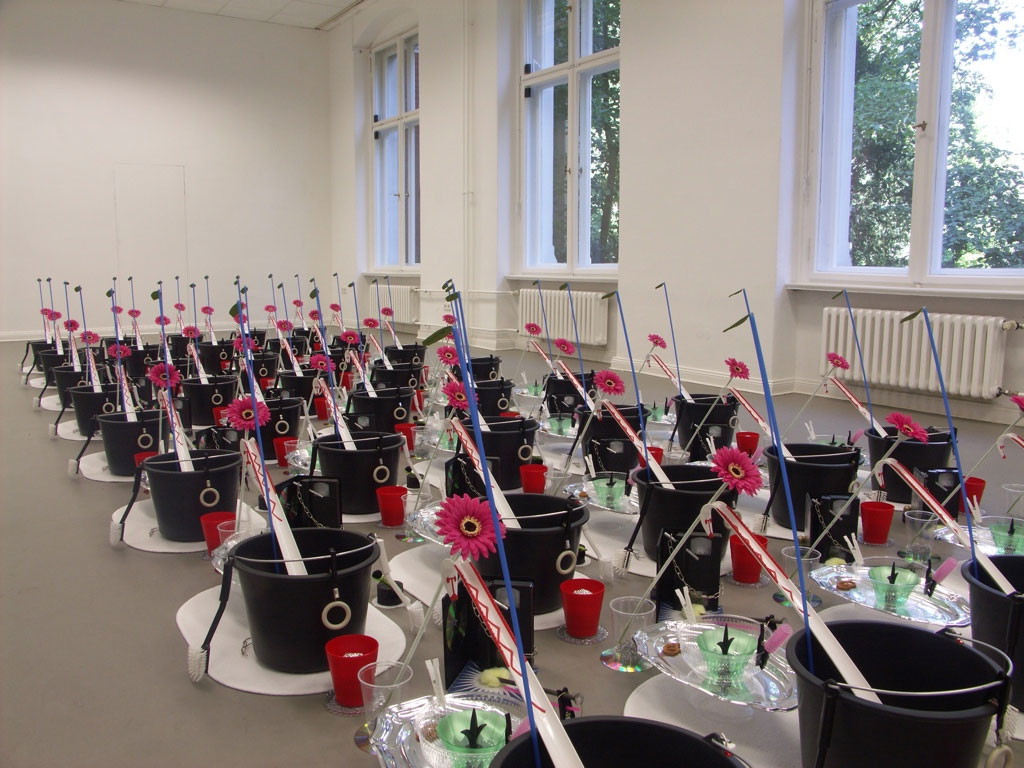
b. rhythmaschine pattern, 2006 – installation, sundry objects – 280 x 775 cm.
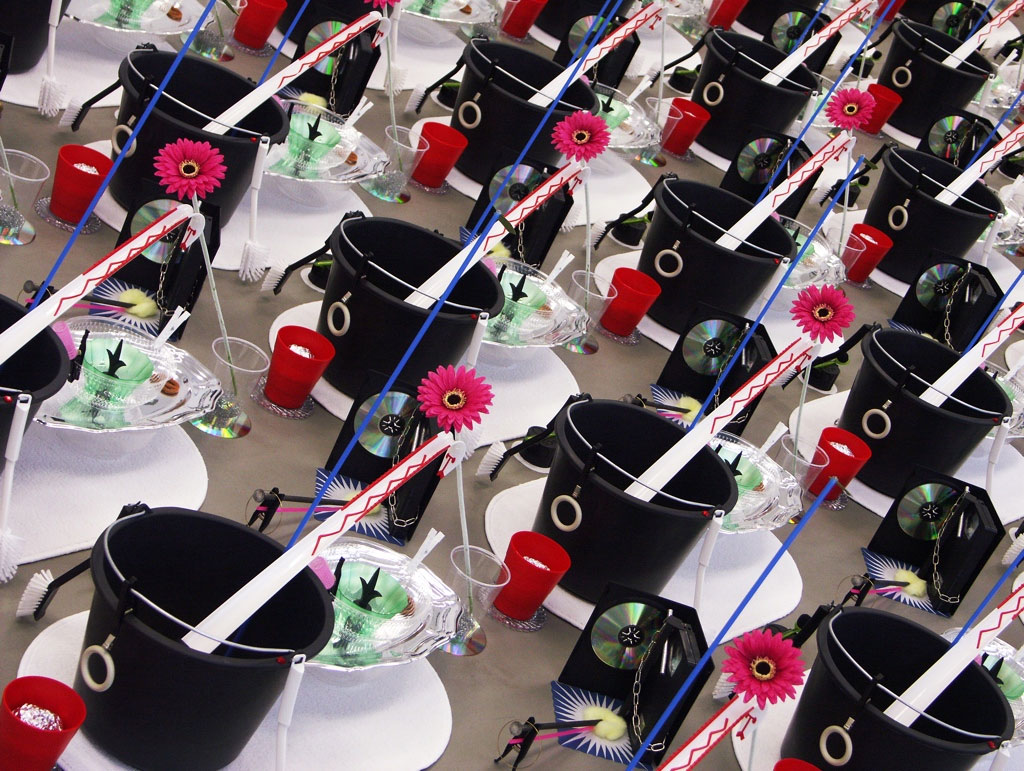
b. rhythmaschine pattern, 2006 – installation, sundry objects – 280 x 775 cm.
Patterns links / Vertical / Photographs
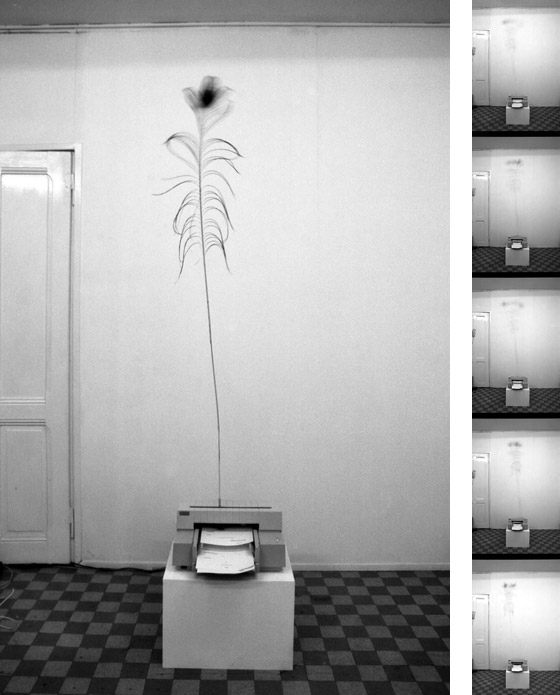
Out of order, 1994 – dispositif informatique, imprimante, plume de paon, impressions sur papier / computer device, printer, peacock’s feather, print-outs on paper – 180 x 70 x 70 cm.

Raoul Pictor cherche son style… (v.1), 1993 – dispositif informatique, ordinateur, imprimante, logiciel / computer device, printer, software – dimensions variables
Awakened by the activation of an internal clock, Raoul appears to us piece by piece, like a ghost, in the room which he uses as his studio. For a few moments, not yet sure of his personal identity, he loses himself in his surroundings, becomes entangled in the bright green trapezium of the fitted carpet or partly snatched up in the drawing of a bookcase, simplified by vertical bars of colour.
As soon as he finds himself, Raoul fervently undertakes his main activity: walking. This exercise is not a goal in itself, it indicates the perplexity of the artist. Decked out in a grey smock, beret fixed onto his head, his hands linked behind his back, Raoul tries out the space in his studio with a touching clumsiness. But when he changes direction he seems to face certain difficulties… is he not confronted with a spatial aporia: how to adjust himself to the illusionary depth of a plane? Raoul’s pacing, a metaphor for the problem of depth, that forever confronts painting, no longer has the virtue of proving motion by doing it, but asserts the possibility of representation. Raoul is a painter – Pictor – primarily by his pacing, obligatory preamble to his art.
To put aside his solemn absorptions the painter is accustomed to playing the piano. During his breaks he also abandons himself in a crudely comfortable armchair nestled into a corner of the room, privileged position for whoever pretends to scrutinize the orthogonality of the phenomenal world. After which, Raoul paints quickly, with an uneasy fervour, in his urgency to fix the outcome of his meditations, longly chewed over during all his comings and goings, before it escapes him. Being a studio-artist his model is mental. No image, picturesque vignette or sublime vision, comes to trouble his clear awareness of relationships. The canvas is finished with large brush-strokes and many gestures, whereupon the artist takes it under his arm and leaves the room by a narrow dark opening; this opening, if we are to grant credit to the Renaissance codes of perspective, symbolises a rectangular opening in the shape of a door.
To note: we know nothing of the work that has just been completed as it was placed on an easel with its back to us, taking the centre position in the studio, and the artist, after having finished his work, took it away without turning it. For the moment Raoul, who has reverted to his primordial electrical state, is linked so intimately to his creation that we can no longer distinguish one from the other, Raoul deprived of a surface, Raoul the algorithm moving in the network of cables, straddling the interface that connects the printer and the computer. From his unrepresented activity, an image is born: a pattern of coloured inks obtained by combining in a landscape format a random selection of elements stored in the programme’s memory. Signed, dated and numbered the work then represents merely one of the terms of the set of probabilities to which Raoul’s creative fervour finally boils down. From here several pressing questions are to be posed:
Does the expression Raoul Pictor seeks his style signify that it will have been found once the music of chance has died, when he has exhausted all possible combinations – without doubt many billions – within the limited framework of his memory? In this hypothesis, if Raoul continues to produce, there will be nothing left for him except to plagiarise himself. Is one to see here a form of rambling or rather consider this as a wonderful lesson in the mysterious mechanics that make artists act? Is not the work of art, whatever its form, whatever materials are employed to embody the form, fundamentally lacking in originality? To the appreciation of the enthusiastic public, which applauds a radical novelty, failing to recognize, beneath the glaring deception of its topicality, a deft or inspired reorganisation of sameness, Raoul offers a less idealistic conception of creation. If after x years of hard labour, he begins to paint canvases that have already come out of his studio, can one fairly reproach him for it, knowing that within his achieved memory his completed work exists, at least potentially, even before he has prepared his palette? A painting that comes out of a printer is therefore always a copy. What privileged status then does the first copy hold? Is it possible to give an ontological legitimacy prohibiting a second or third copy, and finally to them all being reproduced? To the question that opens this passage, we echo the following one, with no pretention of closing the subject: Is it then that, unlike many, who one day believed they had found, Raoul, scrutinizing the boundless but finite corpus of what he has to express, continues to seek?
F. Y. MORIN
(Trad. V. Sordat, D. White)
Le travail d’Hervé Graumann repose essentiellement sur la logique et les effets du monde informatique. Ses œuvres ont une parenté plus thématique que visuelle, car l’artiste, qui incorpore souvent dans son travail des archétypes tirés directement du réel ou de sa représentation, s’intéresse d’abord au contenu que constitue l’action réciproque des médias eux-mêmes.
<L’écheveau de la représentation>
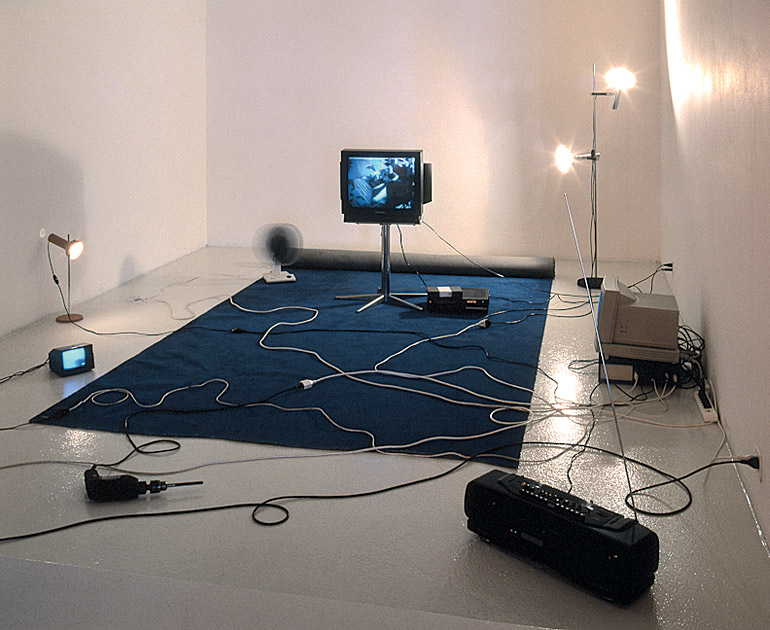
For machines, 1996-97 – dispositif informatique, appareils électriques, bande vidéo / computer device, electrical objects, video tape – dimensions variables
Une œuvre d’Hervé Graumann consistait en une bande vidéo et en un groupe d’objets posés au sol. Le film montrait des individus occupés à de petites choses, et les objets étaient reliés à un programme qui les faisait fonctionner ou non de manière aléatoire. Deux systèmes cohabitaient ainsi, chacun suivant son cours avec indifférence. Le spectateur, quant à lui, qui s’était habitué au <réel> médiatisé par la bande vidéo, et n’y prêtait plus guère d’attention, était toujours surpris quand les objets (artificiels) lui rappelaient leur présence. L’une des caractéristiques de la réalité virtuelle, dont les images peuvent nous apparaître (au sens du spectre), puis disparaître à tout jamais si on ne les <sauve> pas, est d’augmenter son pouvoir en proportion de la vitesse de renouvellement de ses éléments: <Comme la fission et la fusion, les croisements et hybridations des médias libèrent une énergie et une puissance nouvelle immenses>.
En ces questions, la cécité n’est pas inéluctable, pour peu que nous sachions qu’il y a quelque chose à observer> (Marshall McLuhan, 1964). Cette observation, qu’effectue Hervé Graumann, passe par une manipulation éclairée, et la nature du médium qu’il déconstruit apparaît d’autant plus visiblement qu’elle se révèle dans un autre médium. Ainsi, en faisant passer certaines spécificités du médium x dans la sphère du médium y, l’artiste peut éclairer les déterminations d’un contenu z. Dans <Blanc sur Blanc>, par exemple, œuvre non suprématiste mais lexicale, il donne forme à l’effet des méthodes de classement qui, postulant l’exhaustivité en fonction d’un principe aléatoire, mettent sur le même plan des réalités pourtant fort différentes: il s’agit d’une photographie sur laquelle un M. Blanc – qu’Hervé Graumann a sollicité après avoir trouvé son nom dans un annuaire téléphonique – apparaît juché sur les épaules d’un homonyme.
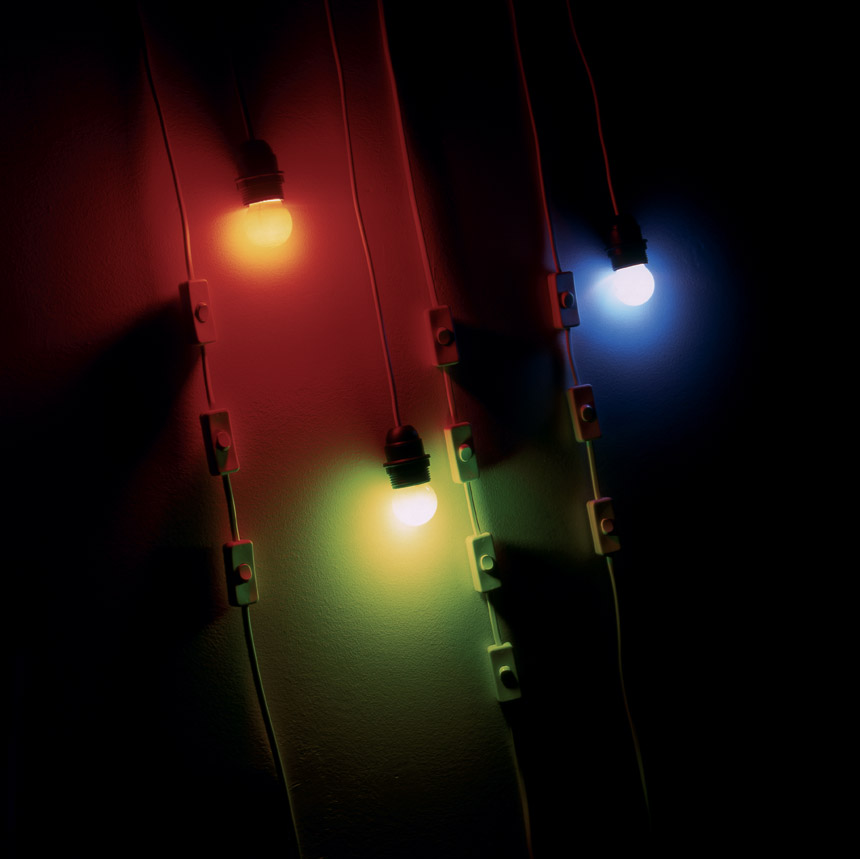
Lampes code RGB, 1998 – lampes, multiples interrupteurs / lamps, multiple switches – dimensions variables
Ou encore, recourant à deux objets issus de l’ère électrique, une lampe et une radio, et leur ajoutant plusieurs interrupteurs, il les dote ainsi d’un attribut majeur de l’ère électronique: le code d’accès. Par le quadrillage intégral d’une photographie, dont il a numéroté les éléments de gauche à droite et de droite à gauche (logique du plotter), il met en évidence le fait qu’avant d’être une image, celle-ci n’est qu’une surface plane ayant été soumise à une opération technique. <Tous les media sont des métaphores actives, en ce qu’ils peuvent traduire l’expérience en des formes nouvelles>, note encore Mc Luhan. Raoul Pictor, le peintre virtuel dont Hervé Graumann a assisté (par ordinateur) la naissance – et qu’il a mis depuis peu sur le web – illustre cela à merveille: œuvrant à l’intérieur de la représentation, il devient la parfaite métaphore de l’artiste contemporain qui, façonné par la Raison Technique, tire de celle-ci toutes ses combinaisons. Dans ce jeu de passe-passe où des simulacres identiques amènent à l’expérience leurs supports hétérogènes, la <réalité> peut faire office de fiction ultime. C’est ce que démontre Hervé Graumann par une série de photographies dans lesquelles des mosaïques de petits objets articulés semblent tirées du canevas d’un programme informatique. Or, ici les objets ont un référent réel, et la perspective vient de la prise de vue si bien que la liste de McLuhan peut s’augmenter d’un nouveau <médium>: l’artiste.
Gauthier Huber, in kunstbulletin – oct 2001